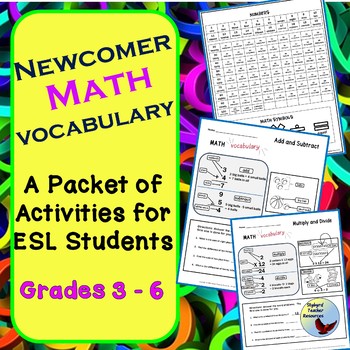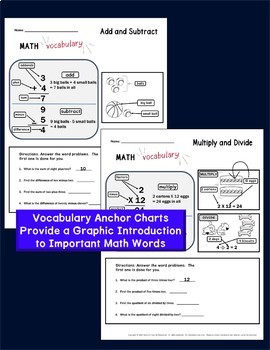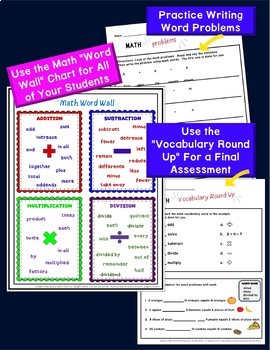ESL Newcomer Activities Introduction to Math Vocabulary
- PDF
- Easel Activity
What educators are saying
Description
Give your beginner or newcomer English Language Learners (ELL) multiple exposure to math vocabulary. Use the vocabulary and writing activities to introduce and reinforce vocabulary used in addition, subtraction, multiplication, division, and math word problems.
*** Important Update: This resource is adapted for digital/distance learning. Click on the red button on the right that says "Use as Buyer."
Research shows students need 8-12 exposures to new vocabulary. This no prep unit will give your students plenty of practice in acquiring and using math vocabulary. Your students can keep the anchor charts/study guides handy as they practice their new skills.
Included in this Unit:
• Cardinal Number Words and Math Operations Vocabulary Anchor Charts/Study Guide
• Addition & Subtraction Anchor Chart/Study Guide
• Multiplication & Division Anchor Chart/Study Guide
• Find & Write the Hidden Number Word Activity
• Write the Number Word Search Activity
• Addition, Subtraction, Multiplication, Division Words Practice Activities
• Identifying Direction Words in Math Problems Activity
• Math Vocabulary Review (Can Be Used for Summative Assessment)
• Answer Keys for all Activities
Follow Me to Be Notified of New Resources and Resource Updates
You can find all of my resources for English Language Learners Here
Customer Tips:
How to get TPT credit to use on future purchases:
• Please go to your My Purchases page (you may need to login). Beside each purchase you'll see a Provide Feedback button. Simply click it and you will be taken to a page where you can give a quick rating and leave a short comment for the product. I value your feedback greatly as it helps me determine which products are most valuable for your classroom so I can create more for you. ☺
Be the first to know about my new discounts, freebies and product launches:
• Look for the “follow” link near the top of any page within my store and click it to become a follower. Voila! You will now receive customized email updates about flash freebies and you will also be able to see when I add to a product you have purchased. Any purchased product can be downloaded unlimited times. ☺






